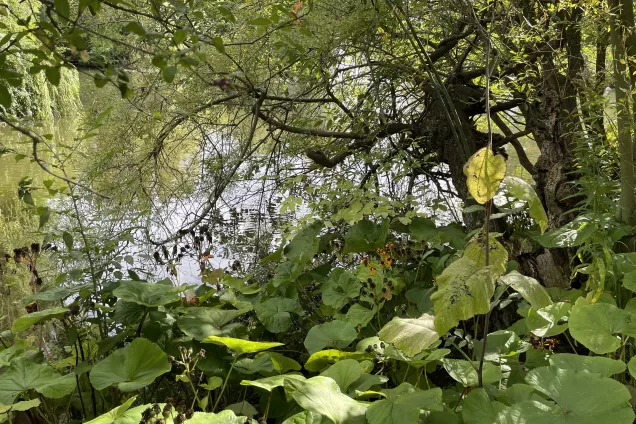Development, modelling and evaluation of climate-vegetation processes (RA1)
RA1 focuses on the development of Earth system models and their application to learn about the character, scope and significance of feedback mechanisms linking the biosphere and atmosphere - both globally and in contrasting regions and climate zones of the world.
The biosphere affects the energy balance and radiation retention of the atmosphere via biogeophysical and biogeochemical feedback mechanisms. It involves for example the amount of sunlight absorbed by vegetation, the evaporation of water from foliage and the soil surface, and the net uptake or release of carbon dioxide and other greenhouse gases due to ecosystem processes like photosynthesis, soil organic matter decomposition, wildfires and human land use.
A core ambition of MERGE is to advance the frontiers of knowledge surrounding the role played by ecosystems and the land surface – the terrestrial biosphere – in the climate system of the Earth. To do this, computer models known as Earth system models (ESMs) are needed to adequately represent the complexity and vast scale of the climate system.
Models developed within MERGE
LPJ-GUESS
The Lund-Potsdam-Jena General Ecosystem Simulator (LPJ-GUESS) was first developed in the late 1990's. It is a globally-applicable model of vegetation dynamics and ecosystem biogeochemistry, a so-called dynamic global vegetation model (DGVM). It has been used in over 100 published studies of climate impacts on vegetation and ecosystems, global and regional carbon balance, biodiversity, agricultural and forest management, and climate adaptation. LPJ-GUESS provides the biosphere component in the RCA-GUESS and EC-EARTH Earth system models, described below.
LPJ-GUESS Ecosystem Model – nateko.lu.se
RCA-GUESS
RCA-GUESS is a regional Earth system model coupling the LPJ-GUESS dynamic vegetation model to the Rossby Centre Atmospheric model, RCA. It is being used to investigate the role of biogeophysical feedback mechanisms mediated by changes in vegetation patterns, species composition and land use on regional climate patterns and trends, for example in Europe, the Arctic and Africa.
Rossby Centre Atmospheric model, RCA
EC-EARTH
EC-EARTH is a global Earth system model developed by a European consortium that incorporates LPJ-GUESS to account for biogeophysical feedbacks of vegetation changes on the atmosphere. In ongoing development it will also account for biogeochemical feedbacks due to ecosystem exchanges of carbon dioxide, other greenhouse gases such as methane and nitrous oxides, secondary organic aerosols and emissions from wildfires.

Contact RA1 leader
Ben Smith
Department of Physical Geography and Ecosystem Science, Lund University
benjamin [dot] smith [at] nateko [dot] lu [dot] se (benjamin[dot]smith[at]nateko[dot]lu[dot]se)
Klaus Wyser
Rossby Centre, SMHI
klaus [dot] wyser [at] smhi [dot] se (klaus[dot]wyser[at]smhi[dot]se)

